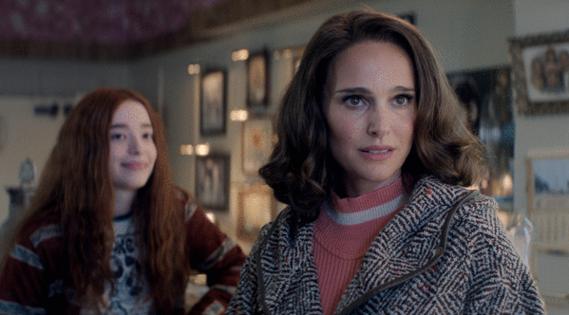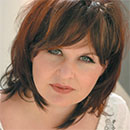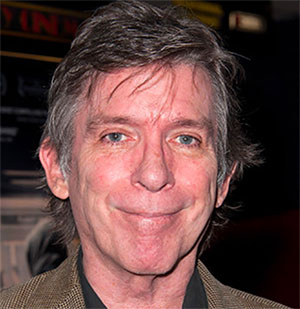Who was the real 'Lady in the Lake'? A look back at a traumatizing year in Baltimore
Published in Entertainment News
BALTIMORE — Shirley Lee Wigeon Parker was always fascinated by the lake in Druid Hill Park, her boyfriend back then said, and once even tried to get him to plunge into its cool, deep waters with her.
“She wanted to swim out to the fountain,” said Arno West, now 87 years old.
Did she, though? Fifty-five years later, what happened to Parker is perhaps even more of a mystery as time has further blurred memories and motivations.
What is known is that on June 2, 1969, almost six weeks after Parker was last seen, workmen found her body in the fountain, too decomposed to identify a cause of death, coroners said.
“The beauteous 35-year-old divorcee,” as one news account called her, was now “the lady in the lake,” a moniker that resonated for over 50 years, becoming the title of the 2019 novel by Baltimore writer Laura Lippman, and the Apple TV+ series based on it that debuted last week.
The main character, journalist Maddie Schwartz, played by Oscar winner Natalie Portman, investigates fictionalized versions of Parker’s death and the unconnected murder several miles to the northwest of 11-year-old Esther Lebowitz, that happened later that year. In the series, Esther is named Tessie Durst and Parker is named Cleo Johnson, and played by Baltimore native Moses Ingram.
Their real-life antecedents remain vivid to those who lived through that time, a period of much racial, gender and other societal upheavals in Baltimore and beyond, just a year after the riots following the assassination of Martin Luther King Jr.
Especially within their communities — African-American in Parker’s case, Orthodox Jewish in Esther’s — the cases were followed closely.
“We were all so traumatized,” said Eli Schlossberg, 74, who was a student at Ner Israel Rabbinical College at the time. “It was unbelievably devastating.”
A community tragedy
Esther Lebowitz had been dropped off at the corner of Northern Parkway and Park Heights Avenue on the afternoon of Sept. 29, 1969, by a rabbi at her school, Bais Yaakov, and planned to stop at a drugstore then walk several blocks home, according to a Baltimore Sun story at the time.
It was a safe area for children, said Schlossberg, an author whose books include “My Shtetl Baltimore.” He remembers regularly walking there himself as a child, to the Richmond drugstore for snowballs or the tropical fish store for aquarium supplies.
But Esther never made it home that day, triggering a search by both police and volunteers, including Schlossberg, who knew the Lebowitz family. Two days later, the girl’s battered body was found in a weedy, infrequently traveled area near athletic fields on Enslow Avenue in Mount Washington.
Gravel found on her body linked the crime to the tropical fish store, and its owner and operator Wayne Stephen Young, 23, was arrested.
It was a stunning turn of events, given that many assumed a stranger had grabbed the young girl off the street. But Young was a trusted merchant, lived in the community and was described as a “secular Jew.”
“I was shocked because I knew both the killer and the murderer,” Schlossberg said. “To know both was unbelievable.”
Young had bludgeoned the girl during a rape or an attempted rape, prosecutor Howard L. Cardin said at the trial. Young claimed temporary insanity, and in testimony that could have come from the movie “Psycho,” doctors described him as desperate to separate from his overprotective mother, a “classic stereotype” of a “Jewish mother.” A mother-son argument the morning of the killing, according to Sun trial coverage, “primed” Young for the fatal beating.
“He was trying to destroy his mother,” a Clifford T. Perkins State Hospital psychiatrist testified.
It took the jury just 30 minutes to find Young guilty of first degree murder. He was sentenced to life in prison and died there in 2015, a month after Maryland’s second highest court vacated his conviction and ordered a new trial.
The Lebowitz family ultimately moved to Israel, but members of their community would attend court hearings when there was a chance that Young might be released.
The prosecutor Cardin said that while he initially viewed Young as “evil,” years later he came to support his requests for parole, which were never granted. Cardin also backed a new trial for Young under the 2012 Unger ruling that flawed jury instructions entitled certain prisoners to request ones.
It put Cardin — the brother of retiring U.S. Sen. Ben Cardin — on the opposite side of a community in which he has deep family roots. As an active member of the Jewish Big Brother & Big Sister League, he sometimes took his mentees to visit Jewish inmates, including Young.
“I thought he had rehabilitated himself. I thought he had earned the right to request release,” Cardin said. “There were some that were very, very strongly opposed to my opinion.”
He acknowledged it would have been difficult for Young to return to the community that he had so violated. Cardin himself has childhood memories of “hanging out” in the area where Esther disappeared.
“It made everybody more aware,” Cardin said, “that the world itself wasn’t as safe as we thought it was.”
‘What happened’ to Shirley Parker
It was five months before Esther Lebowitz disappeared that Shirley Parker also vanished. Beyond that, there were few similarities to the cases, other than news reporters quoting the same assistant medical examiner, Dr. Ronald Kornblum, on autopsy findings.
The Afro newspaper extensively covered Parker’s disappearance and the subsequent discovery of her body, publishing exclusives and features including one about a “prophet” who held a seance and said he made a “spiritual link” with the late woman.
Parker had been a bookkeeper and barmaid at the legendary Sphinx Club on Pennsylvania Avenue, the city’s former Black entertainment district, adding a level of intrigue to the case, said the Rev. Alvin Hathaway, a lifelong Baltimorean.
“She was well-known. It became a topic of conversation: What happened?” said Hathaway, 73, who at the time was a teenager growing up in the Upton neighborhood. “It was never explained.”
Details are a bit hazy on what happened that night, but news accounts relayed that Parker and West had some drinks, they argued and took a drive to “cool off.” He dropped Parker near Druid Hill Park, and when he went back to check on her, she was on the other side of the fence that circles the lake. He said he helped her over the fence and took her home. Her mother said she didn’t come home that night.
This week in an interview with The Sun, West said he didn’t remember arguing with Parker that night. He said he thinks that at some point she must have swum to the fountain, gotten to the top of of it and slipped and fell.
West said he thinks he and Parker had dated for six to eight months, and met either at the Druid Hill Park pool or the Sphinx Club. She was “a fantastic swimmer,” he said. Her mother said at the time that she had been a lifeguard.
On May 13, the lake was dredged in an unsuccessful search for Parker’s body. Oddly enough, it was a reader’s appeal to The Evening Sun’s “Direct Line” column that ultimately led to the discovery.
A “Mrs. E.D.J.” who called herself “a daily watcher” of the fountain’s “very impressive” lights noted they were “a pleasure to watch, but they come on too late at night,” seemingly after 11 p.m. “Could the starting time be made earlier?” she asked.
A crew sent to investigate found Parker’s body in a saucer-like depression on top of the fountain with about a foot of water in it, according to a Sun account. The fountain, which had a metal ladder running up its side, rose about 20 feet above the water and was some 35 yards from shore.
An autopsy found no gunshot or stabbing wounds, but an assistant medical examiner told the Afro that given the decomposition, signs of foul play could have “washed or decayed away.” The examiner went on say it was “possible she was drowned.”
West was questioned and polygraphed, but the death was never ruled a homicide and thus there was nothing to charge anyone with.
Still, the case would follow him, West said. Often when he would meet someone, they eventually would ask, “So what did happen to Shirley?”
Parker left behind two sons, the younger of whom, David, 9, lived with her in Baltimore.
David Parker is 64 now, retired, living in the area and himself the father of six children. He thinks frequently about his mother and, in describing her disappearance and death, uses the same word as those who lived through the death of Esther Lebowitz later that year.
“It was very traumatic for me,” Parker said.
He has thought about approaching the city and asking that Druid Park Lake Drive be renamed Shirley Parker Way.
“You only get one mom in this world,” he said. “I’m not going to let my mom’s name die.”
______________
©2024 Baltimore Sun. Visit baltimoresun.com. Distributed by Tribune Content Agency, LLC.













Comments